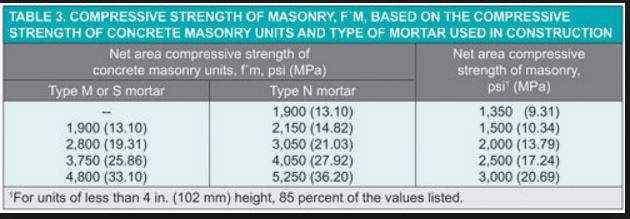Hoboneer
Structural
- Sep 19, 2016
- 17
ACI 530.1-05 Table 2
Why are there different strength units listed under Type M or S and Type N mortar?
What does this mean? That 2150 psi units can only be used with type N mortar?
Why are there different strength units listed under Type M or S and Type N mortar?
What does this mean? That 2150 psi units can only be used with type N mortar?

